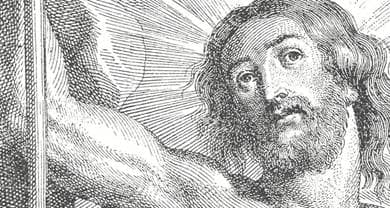- Trending:
- Forgiveness
- |
- Resurrection
- |
- Joy
- |
- Feminism
- |
- Afterlife

RELIGION LIBRARY
Anglican/Episcopalian
Schisms and Sects
The history of sects and schisms in Anglicanism begins with the Separatists and Presbyterians, Puritan Calvinist groups that came of age under Queen Elizabeth I.
Unwilling to acquiesce in Elizabeth's Settlement of Religion, individuals of radical Puritan leanings formed illegal congregations independent of the national Church. These Separatists believed in the autonomy of the individual congregation from rule or oversight by outsiders. Separatists came to be known as Congregationalists or Independents, and at the time of the English Civil Wars they were prominent in the army of Oliver Cromwell.
Not all Puritans rejected the Church of England; indeed, most sought to reform the Church from within. Among these were some who actively opposed the Church's institutional (episcopal) polity and promoted a more egalitarian, presbyterian structure. The Queen strongly opposed this movement until it all but died in the 1590s. The impulse, however, did not die, and Presbyterianism came to power in Parliament in the 1640s.
Another group that flourished during the English Civil Wars was the Baptists. The Baptist movement's roots in England were in the Separatist movement. Certain Separatist congregations of the early Stuart period began to practice believer-only baptism, rejecting the practice of infant baptism.
The final influential sect from the Civil War period was the Society of Friends, or Friends of the Truth as they then referred to themselves, or Quakers, the epithet by which they were commonly known. The Friends taught that individuals receive truth by direct revelation from God, and rejected a number of social conventions. They were persecuted by all quarters both during the Interregnum and after the Restoration.
After the Restoration, by the Act of Uniformity of 1662, all of these groups were excluded from comprehension within the established Church. They have been distinct from the Anglican Church ever since.
The Restoration era saw the rise of two parties within Anglicanism that would have lasting importance. The first was the High Church group, which emphasized the historic continuity of the English Church back to the patristic era, episcopacy and monarchy as matters of divine right, and sacramental grace. The intellectual roots of the group extended back to the avant-garde conformists of the Elizabethan and Jacobean Church. In 1688, the so-called Glorious Revolution brought the overthrow of the highly unpopular Catholic King of England, James II, by William of Orange and his wife Mary, an Anglican of the Stuart line, without English resistance. Some of the High Churchmen--most notably Archbishop of Canterbury William Sancroft--viewed this event as an illegitimate usurpation of James II's God-ordained rule, and refused to take the required oaths to the new monarchs. These so-called Nonjurors steadily lost influence and numbers throughout the 18th century, and none remained by the 19th century .
The High Church party was weakened significantly by the Nonjuror schism, and the mainstream of the English Church came in the early 18th century to be dominated by the other Restoration-era party, the Latitudinarians. This group, called "Low Church" in the early 18th century, was borne out of the Cambridge Platonist movement and was influenced by the rationalist philosophy of John Locke. Although far from uniform in their outlook, Latitudinarian tendencies were to tie reason and revelation closely together, and to emphasize morality as the key to Christianity. Doctrinal precision, episcopacy, and sacramental theology generally were downplayed, while human nature and the role of reason in religion were perceived in high terms.
The historically unsurprising backlash against rationalistic religion came in the form of the Evangelical Revival. Its roots were in the Methodist movement initiated by John Wesley in 1729. Although his movement began in a distinctly High Church spirit, a conversion experience in 1738 initiated his fifty-year ministry of open-air, revivalist preaching that emphasized faith in Christ as the only means of salvation, and amendment of life.
An early colleague of Wesley was George Whitefield, but the two eventually parted over the doctrine of grace, Wesley preaching (Dutch) Arminianism and Whitefield espousing Calvinism. Wesley's followers eventually left the Anglican Church to form the Methodist Church, and some followers of Whitefield formed a Calvinist Methodist Church, as well. But most of Whitefield's followers either joined Congregationalist bodies or, like John Newton, remained in the established Church to form the Evangelical wing of Anglicanism. Evangelical beliefs included the salvific necessity and sufficiency of faith in Christ's atoning sacrifice, the inerrancy of the scriptures, the continuing work of the Holy Spirit in the sanctification of the Christian, and low views of episcopacy, the sacraments, and human nature.
The final identifiable Anglican group for consideration is the Anglo-Catholics. After changes in English law removed the assurance of an Anglican Parliament, and as Parliament continued to exercise authority over the Church, John Keble preached his famous Oxford sermon on "National Apostasy" in 1833, and the Oxford Movement began. The Movement's adherents--most notable besides Keble were John Henry Newman and Edward Pusey--were called Tractarians, because they wrote tracts to promote their views. Their views opposed primarily the rationalism of the Latitudinarians, but also the Reformed and somewhat anti-intellectual character of the Evangelicals. The Tractarians were the heirs of the High Churchmen, and their goal was a Catholic, but non-Roman, Christianity. They were influenced by the writings of both Greek and Latin Fathers, the 17th-century Caroline divines, and the Romantic movement that was affecting English culture. They had high views of sacramental grace and the real Eucharistic Presence, and also of episcopacy and the Church's independence. Although the Tractarians were not particularly ritualistic, as Anglo-Catholicism developed ritualism became one of its defining features.
Anglo-Catholicism as conceived in the Oxford Movement suffered two major setbacks. First, a number of its members felt their views led them inevitably to Rome. Newman himself eventually became a Roman Catholic Cardinal. Secondly, in the late 19th century a number of Anglo-Catholics absorbed liberal theological methods and conclusions, splintering the group into Liberal Catholic and Anglo-Catholic elements.
Study Questions:
1. Why should Puritanism be viewed as a mindset, rather than a sect?
2. Did Puritans reject the Church of England? Explain.
3. Describe the sects that emerged during the Civil War period.
4. How was Anglicanism split within the Restoration era?
5. What is Anglo-Catholicism? How did it originate, thrive, and suffer?










